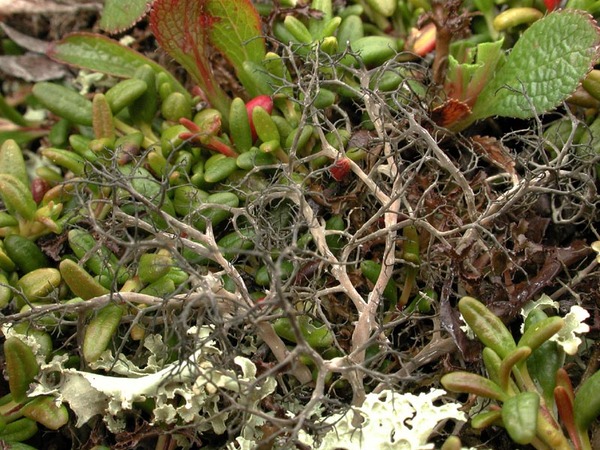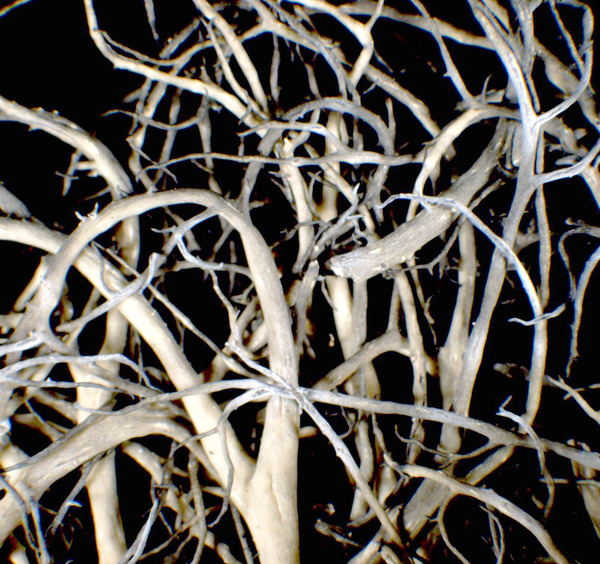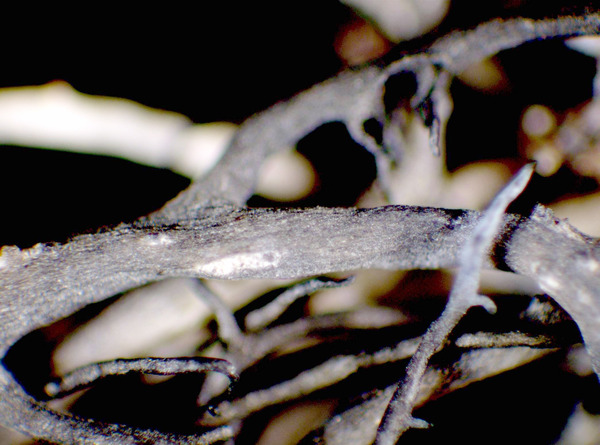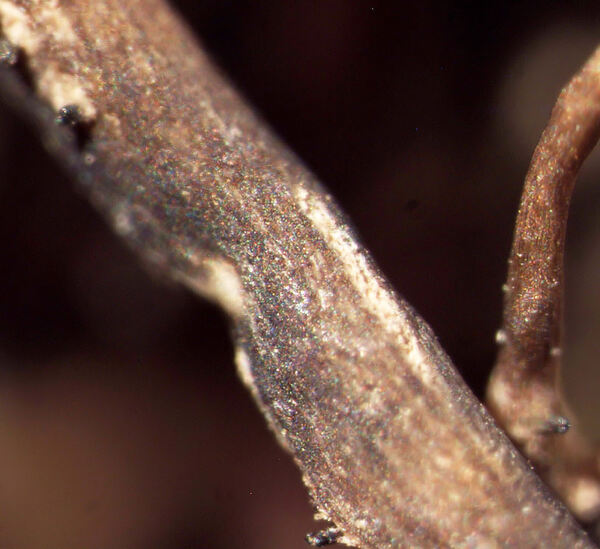Alectoria nigricans (Ach.) Nyl.
Lich. Scand.: 71, 1861. Basionym: Cornicularia ochroleuca var. nigricans Ach. - Lichenogr. Univ.: 615, 1810.
Synonyms: Alectoria thulensis (Th. Fr.) Nyl.; Gowardia nigricans (Ach.) Halonen, Myllys, Velmala & Hyvärinen
Distribution: N - Frl, Ven (Tretiach 1993), TAA (Brackel 2013, Nascimbene & al. 2022), Lomb, Piem (Isocrono & al. 2004), VA (Piervittori & Isocrono 1999).
Description: Thallus fruticose, filamentous, ascending to decumbent, rigid, pinkish grey to pale grey brown at the base, dark grey-brown to black at apices, dull, forming large, loosely attached entangled mats, the branches 0.5-1(-1.5) mm thick, anisotomic-dichotomously divided, to 8(-10) cm long, subterete, becoming flattened at the base. Pseudocyphellae abundant, slightly raised, fusiform to linear, to 1.2 mm long. Cortex of periclinally arranged hyphae; medulla white, rather compact. Apothecia extremely rare (never found in Italian material), zeorine, to 2 mm across, with a brown disc. Epithecium brown; hymenium and hypothecium colourless. Asci 2(-4)-spored, clavate, the K/I+ blue tholus penetrated by a faintly amyloid apical cushion with parallel or diverging flanks, the wall K/I-, surrounded by a K/I+ blue outer layer, Lecanora-type. Ascospores, 1-celled, broadly ellipsoid, first hyaline, later reddish brown, 20-40 x 12-25 μm. Photobiont chlorococcoid. Spot tests: medulla K+ faintly yellow to reddish, C+ red, KC+ red, P+ yellowish. Chemistry: alectorialic acid and usually barbatolic acid.Note: an arctic-alpine, circumpolar species found on bare ground or on siliceous rocks in wind-exposed ridges, mostly in moss-lichen heaths above treeline. Restricted to the Alps in Italy.
Growth form: Fruticose filamentous
Substrata: rocks, soil, terricolous mosses, and plant debris
Photobiont: green algae other than Trentepohlia
Reproductive strategy: mainly asexual, by thallus fragmentation
Commonnes-rarity: (info)
Alpine belt: rather rare
Subalpine belt: extremely rare
Oromediterranean belt: absent
Montane belt: absent
Submediterranean belt: absent
Padanian area: absent
Humid submediterranean belt: absent
Humid mediterranean belt: absent
Dry mediterranean belt: absent

Predictive model
Herbarium samples
Growth form: Fruticose filamentous
Substrata: rocks, soil, terricolous mosses, and plant debris
Photobiont: green algae other than Trentepohlia
Reproductive strategy: mainly asexual, by thallus fragmentation
Commonnes-rarity: (info)
Alpine belt: rather rare
Subalpine belt: extremely rare
Oromediterranean belt: absent
Montane belt: absent
Submediterranean belt: absent
Padanian area: absent
Humid submediterranean belt: absent
Humid mediterranean belt: absent
Dry mediterranean belt: absent

Predictive model
| Herbarium samples |
 INDEX FUNGORUM
INDEX FUNGORUM
 GBIF
GBIF
 DOLICHENS
DOLICHENS







